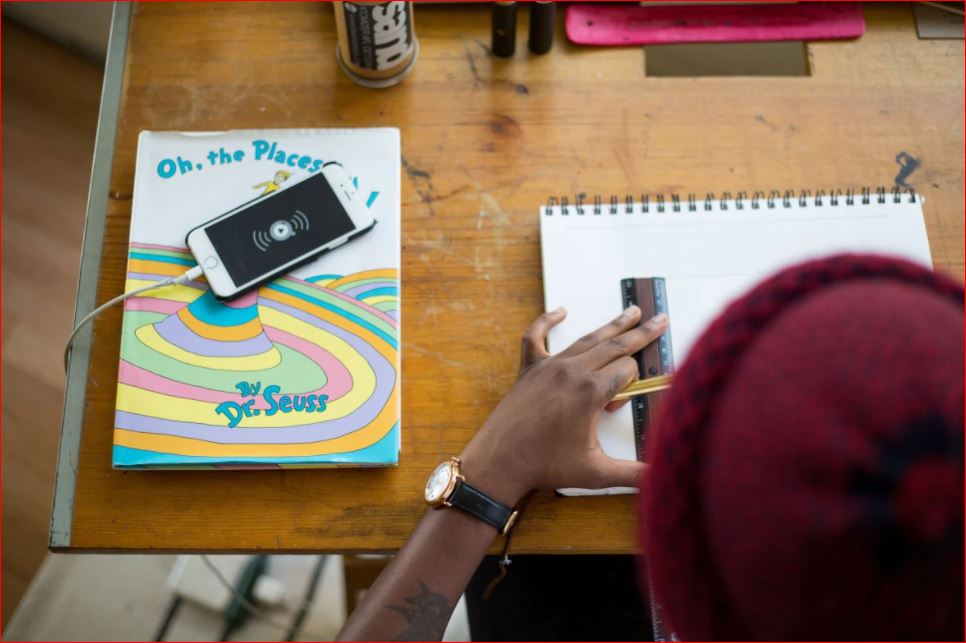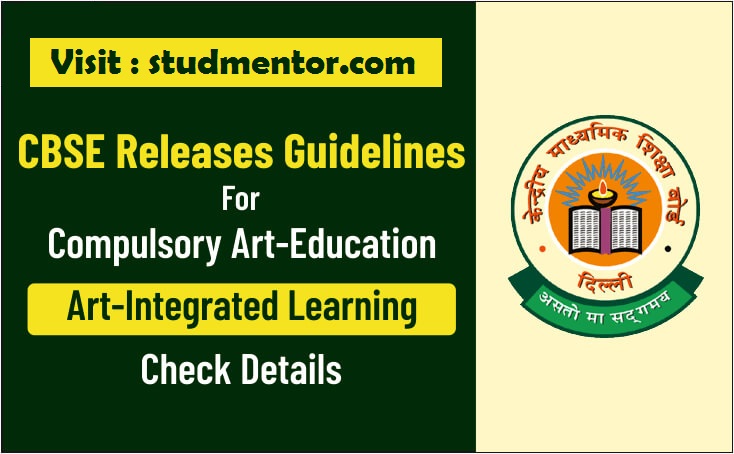As per a new CBSE circular, CBSE art-integrated projects are mandatory from 2020-21 in every subject for class 9 and 10 which would be considered for internal assessment. CBSE students of classes 1 to 8 need to create one project every year not limited to any one subject.

As per a CBSE circular dated May 14, all CBSE schools now have to ensure that they are following art-integrated learning for classes 1 to 10, from the academic session 2020-21.
CBSE students of Classes 1 to 8 need to create at least one art-integrated project in each academic year which can be considered for Internal Assessment in the subjects concerned the project doesn’t have to focus only on one subject.
But CBSE students of classes 9 and 10 need to take up an art-integrated project for every subject which will be considered for internal assessment.
CBSE clarified in the circular that art-integrated learning was being introduced as a teaching tool and not to boost art skills in general. It was a way to use art to both teach and understand various subjects better.
Given below are all the guidelines that CBSE schools and CBSE students need to follow for art-integrated projects.
What is art integration?

Art integration uses various art forms for experience-based learning of various concepts in different subjects.
As per the CBSE circular, this will also help in “imbibing the Indian ethos through integration of Indian art and culture in the teaching and learning process at every level.”
“This art-integrated approach will strengthen the linkages between education and culture,” it added.
Why is CBSE introducing art-integrated learning?
The motive behind introducing this art-integrated learning is to make the teaching and learning process more joyful, implement learning outcomes and “enable all stakeholders to follow Competency Based Education (CBE)”.
The Central Board of Secondary Education on January 18, 2019, had mandated Learning Outcome (LO) Based Teaching-Learning process in all its affiliated schools to help educate students in such a way that they can apply their knowledge in real life situations.
“CBE can be implemented only through innovative and joyful experiential pedagogies such as Art-Integrated and Sport-Integrated Learning, Storytelling, etc. which promote reflection, critical thinking, creativity, initiation, self- direction and other 21st Century Skills,” the CBSE notification said.
“All this is done to make students 21st century- ready citizens, by empowering them with the competencies to understand, analyze, evaluate, interpret and innovate various real life situations that they require to face in the world outside the classrooms or an environment beyond their schools and homes,” the notification added.
Guidelines for CBSE schools to introduce art integrated learning
As per the CBSE circular, here are the guidelines for art-integrated projects to be carried out by CBSE students:
1. For classes 1 to 8, art integrated projects should be of trans-disciplinary nature. The project work can include more than one subject and this can be considered for Internal Assessment in the subjects concerned.
2. For classes 9 and 10, CBSE students will take up the art integrated project work as subject enrichment activity in all the subjects for internal assessment.
3. Since one of the motives of art integrated learning is to make students aware of the diverse Indian art and culture, CBSE students need to integrate their projects with some kind of Indian art. Teachers will need to facilitate the learning of this art form and its usage in the project.
4. CBSE students of classes 1 to 10 have to pick minimum one art integrated project that includes the art form of the paired Indian state and Union Territory (table given in annexure in CBSE circular linked below) as defined under Ek Bharat Shrestha Bharat Programme.
For example, CBSE students of Delhi will need to integrate the art form of Sikkim.

5. Subject teachers along with arts teachers must plan and discuss the projects in advance at the beginning of the academic session so that students can be given proper guidance to undertake various projects.
6. The focus should be given on research of new topics that are not yet taken up in the classroom. Teachers must facilitate exploration of research on the topics to give students hands-on experience.
7. The CBSE art integrated projects should be taken up in an eco-friendly manner, using readily available local resources without any financial burden on parents or guardians.
8. The teachers may follow the following process of embedding arts with other subjects for carrying out the project work:
9. The projects should be done by CBSE students in groups of 4-5 students.
10. While creating the art integrated projects, it should be noted that the art aspect shouldn’t be so high level that it gets out of scope of the subject teacher to guide the students. It should be simple enough to be done without assistance of artists or art teachers.
11. Assessment techniques for these CBSE art integrated projects should be relevant and age appropriate. Criteria along with rubrics for assessment can be devised collectively by teachers and students while planning the projects.
Students must be informed about the criteria decided for assessment along with maximum marks before commencement of work on the art integrated project.
12. CBSE schools and teachers may prepare their academic calendar by assigning dates and months for the execution of project work by the students and the records of assessment of these project works should be maintained at the schools.
13. The art integrated project work shall also be an integral part of assessing the CBSE student’s participation in art-related activities and attainment of learning outcomes for the subject/s.
14. The marks awarded for these projects, as part of subject-enrichment activities of class 10, will be collected by CBSE at the time of uploading of marks of internal assessment.
Official Circular Announced by CBSE
Art-Integrated Learning (AIL) to be used as a teaching tool for classes 1 to 12, not for learning art skills
AIL will continue as a pedagogical tool for classes 1 to 12 in addition to the Art Education under co-scholastic area as provided in the Secondary School Curriculum of the Board.
The objective of AIL is not to promote arts and skills of arts but to use art as a tool to teach other subjects. The focus here should be to accept arts as medium of the learning process.
So, the subject teachers may make use of simple art forms in the classrooms; and give opportunities to students to enjoy planned art activities and while they are experiencing beauty of arts, they also learn and articulate the core concept of different subjects and apply it in daily life.
Art activities which can be integrated with different subjects to aid learning are given in Annexure-II in the CBSE circular linked below. The activities given in the annexure are only suggestive.
Correlation of AIL activities, is to be seen broadly and should not restrict to one or the other kind of subjects. For example, what helps us in Agriculture as a subject can also connect to Mathematics and Science subjects.
In AIL activities, teachers and students may go for integration of visual and performing arts too. Since skill of making art is not the criteria of evaluation, children can explore and might come out with very creative expressions that enable achievement of the learning outcomes.
Schools need to report on the implementation of Art-Education (AE) and Art-Integrated Learning (AIL)
CBSE has prepared the Art Education (AE) and Art Integrated Learning (AIL)- AE & AIL portal for reporting of the implementation of AE and AIL.
CBSE schools have to upload the data of the Art-Education and Art- Integrated Learning projects of students in the AE&AIL portal to enable students of classes 10 and 12 to appear in the board exams.









We are from JNV Jalpaiguri Bengal, Abhijit Roy art teacher. We look through the internet occasionally & find printed matter on art education, EBSB & art integration also we i.e. student & teacher started it although weakly … but trying to be more activity oriented.
from senior art teacher Abhijit Roy